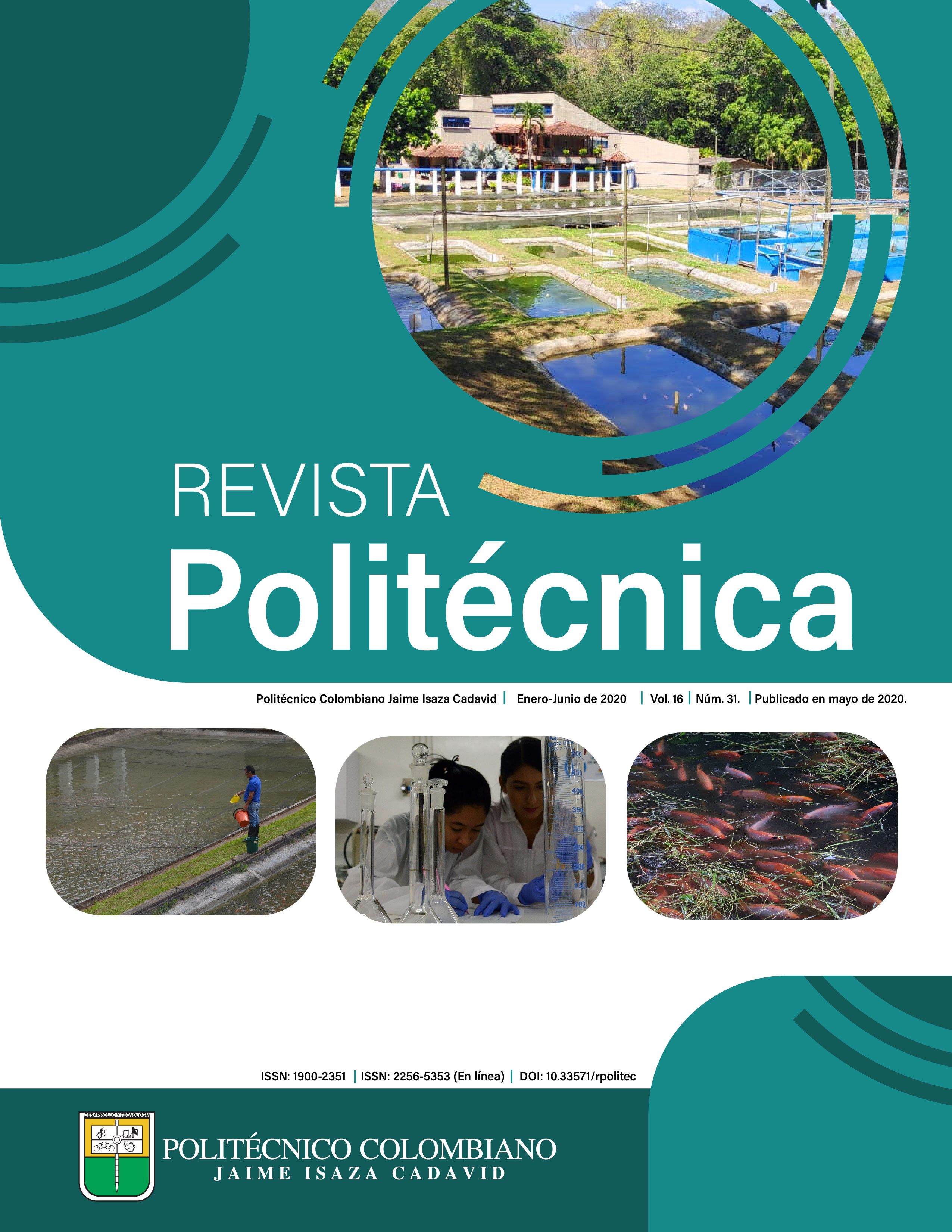Ethanol production from fresh cassava using the process strategy (simultaneous hydrolysis anf fermentation) using viscosity reducing enzymes
DOI:
https://doi.org/10.33571/rpolitec.v16n31a2Keywords:
Ethanol, Fresh cassava tuber, simultaneous enzymatic hydrolysis and fermentation (SSF), viscosity reductionAbstract
The production of ethanol from fresh cassava was evaluated by the use of viscosity reducing enzymes and starch hydrolyzing enzymes in granular form using the strategy of simultaneously integrating hydrolysis and fermentation. Cassava tubers were used; the effect of pH, enzyme load and shell on viscosity was evaluated; In addition, the pre-liquefaction of starch granules and the effect of loading of the stargen® 01 complex and the inoculum on ethanol production were evaluated. The optimization and validation of the process was carried out. The pH, enzymatic activity and the shell had an effect on viscosity; In the HEFS system the inoculum and the enzymatic load had an effect on ethanol production. It was possible to produce ethanol by using degrading enzymes of the cell wall to reduce viscosity and by using hydrolytic enzymes of starch granules.
Se evaluó la producción de etanol a partir de yuca fresca mediante el uso de enzimas reductoras de viscosidad y enzimas hidrolizantes de almidón en forma granular utilizando la estrategia de proceso de integración en forma simultánea de la hidrólisis y la fermentación. Se utilizaron tubérculos de yuca fresca; se evaluó el efecto del pH, carga enzimática y la cáscara sobre la viscosidad; se evaluó además el prelicuado de los gránulos de almidón y el efecto de la carga del complejo Stargen® 01 y el inoculo sobre la producción de etanol. Se realizó la optimización y validación del proceso. El pH, actividad enzimática y la presencia de cascara presentaron efecto sobre la viscosidad; en el sistema HEFS el inóculo y la carga enzimática tuvieron efecto sobre la producción de etanol. Fue posible la producción de etanol mediante el uso de las enzimas degradantes de la pared celular para disminuirla viscosidad y mediante el uso de enzimas hidrolíticas de los gránulos de almidón.
Article Metrics
Abstract: 1345 HTML (Español (España)): 1563 PDF (Español (España)): 586 XML (Español (España)): 57PlumX metrics
References
Ospina, B. y Ceballos, H. La yuca en el tercer Milenio: Sistemas Modernos de producción, procesamiento, utilización y comercialización. CIAT. Cali, 2002.
Srikanta S., Jaleel S.A., Ghildyal N.P., Lonsane, B.K. Techn-economic feasibility of etanol production from fresh cassava tubers in comparison to dry cassava ships, Die Narrung., 36, 253-258, 1992.
Wang, D., Bean, S., McLaren, J., Seib, P., Madl R., Tuinstra, M., et al. Grain sorghum is a viable feedstock for ethanol production, J. Ind. Microbiol. Biotechnol., 35, 313-220, 2008.
Ingledew, W.M, Thomas, K.C., Hynes, S.H., McLeod, J.G. Viscosity concerns with rye mashes used for ethanol production, Cereal Chem., 764, 59–464, 1999.
Sriroth, K. y Piyachomkwan, K. Processing of Cassava into Bioethanol. Proceedings of 8th Regional Workshop: A New Future for Cassava in Asia: Its Use as Food, Feed and Fuel to benefit the poor, pp. 740-750, Vientiane, Lao PDR, Oct 20-24, 2008.
Rutz, D., Janssen, R. Biofuel technology handbook. Munich: WIP Renewable Energies; 2007
Sørensen, S.O., Pauly, M., Bush, M., Skjøt, M., McCann, M.C., Borkhardt, B., et al. Pectin engineering: modification of potato pectin by in vivo expression of an endo-1,4-b-d-galactanase, Proc Natl Acad Sci., 97, 7639–44, 2000.
Beldman, G., Rombouts, F.M., Voragen, A.G.J., Pilnik, W. Application of cellulase and pectinase from fungal origin for the liquefaction and saccharification of biomass, Enzyme Microb Technol., 6, 503–7, 1984.
Slominska, L., Starogardzka, G., Application of a multi-enzyme complex in the utilization of potato pulp, Starch-Sta¨rke., 39, 121–5, 1987.
A.O.A.C.1990. Official methods of analysis. Association of official Analytical Chemist. E.U.A.
Mestres, C. Comparison of various processes of making maize pasta, J. Cereal Sci., 17, 277 – 290, 1993.
Mirhosseini, H., Tan, C. P., Hamid, N. S. A, & Yusof, S. Effect of Arabic gum, xanthan gum and orange oil contents on ζ-potential, conductivity, stability, size index and pH of orange beverage emulsion, Colloid Surface A: Physicochem Eng Asp., 315, 47-56, 2008.
Miller, G. Use of dinitrosalicylic acid reagent for determination of reducing sugar, Anal.Chem., 31, 426-428, 1959.
Castaño, H.I, Mejia, C.E., Producción de etanol a partir de almidón de yuca utilizando la estrategia de proceso sacarificación- Fermentación simultáneas SSF, Vitae., 15, 51-58, 2008.
Castaño, P., B. Cardona, G.C. Mejía y C. Acosta. Producción de etanol a partir de harina de yuca en un sistema de hidrólisis enzimática y fermentación simultánea, Dyna., 169, 158-166, 2011.
Poonsrisawat, A., Wanlapatit, S., Wansuksri, R., Piyachomkwan, K., Paemanee, A., Gamonpilas, C., Champreda, V. Synergistic effects of cell wall degrading enzymes on rheology of cassava root mash, Process Biochemistry, 7, 290,.2016https://doi.org/10.1016/j.procbio.2016.09.010
Yingling, B.,Zongcheng, Y., Honglin, W., & Li, C. Optimization of bioethanol production during simultaneous saccharification and fermentation in very high-gravity cassava mash. Antonie van Leeuwenhoek, International Journal of General and Molecular Microbiology, 2011. https://doi.org/10.1007/s10482-010-9494-5


 _
_






















